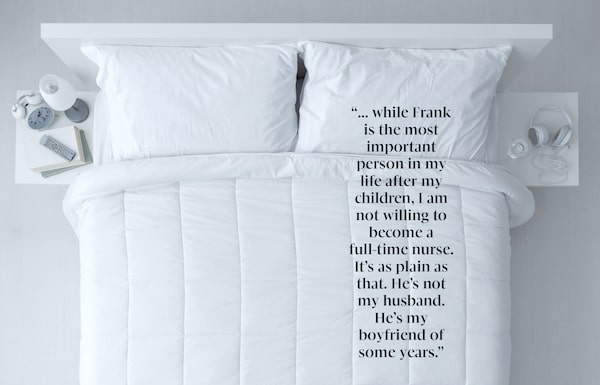
iStock Photo
Susan Pinker is a Canadian psychologist and the author of The Sexual Paradox and The Village Effect. She writes about social science in the Wall Street Journal.
When my mother-in-law died unexpectedly in 1987, my 71-year-old father-in-law, Charlie, suddenly found himself surrounded by widows offering casseroles. Of course, he looked like a mustachioed Clark Gable. He also had a car, a driver’s licence and a wry sense of humour. But he wasn’t interested in marrying again. Although Charlie didn’t cook and badly needed company, he had decided that if his wife was gone, he would live alone.
Now the tables have turned: Older men are more interested in remarrying or living with romantic partners than they were a generation ago. Women? Not so much.
Related: The new reality of dating over 65: Men want to live together; women don’t
The latest census data from Statistics Canada show that 68 per cent of seniors who live alone are women, the vast majority of whom say that they are quite happy with that arrangement, thank you very much. A similar picture emerges from a continuing national study of American seniors led by University of Chicago professor of sociology Linda Waite. “We now have more seniors who have a sexual or romantic partner they don’t live with. This is driven by women more than men,” Prof. Waite told me. In Europe, too, fewer older women want to live with their romantic partners compared with men their age, according to University of Haifa sociologist Alisa Lewin who, like many other researchers, calls the phenomenon LAT, for Living Apart Together.
That’s a big reversal. Thirty years ago, single men over 70 were considered marriage-worthy, “desirable, even if their equipment was useless,” as one older female relative put it. But the same demographic is now more reluctant about making a live-in commitment. “We’re together every day. I cook and he comes to my house for dinner three or four nights a week; the other times he takes me out,” said Marilyn Schiff, an 86-year-old retired nurse from Montreal who has been dating 94-year-old Frank for the past nine years. “We discussed living together after a year or two. Frank brought up the subject of marriage. But our relationship is working so well. I believe that if it ain’t broke, don’t fix it,” Ms. Schiff said, adding “this was not a traditional thing when we were younger. Widowers who got together usually got married.”
So, what has changed?
For one thing, more women are financially independent. Even if they've accrued smaller nest eggs than most men, today's senior women have worked and saved for retirement, and as a result are less likely to need a man as a meal ticket. Plus, their consciousnesses were raised in their youth; they value their independence. "For me, it has to do with a feeling of freedom that I need," Ms. Schiff asserted. "He conducts his affairs independently of me, and me him."
Living alone is also now a question of self-protection for older women. Like Ms. Schiff, many of today’s senior women became single during the social upheaval of the late seventies and early eighties, when divorce rates were at their peak and heart disease was mowing down a generation of men. Having raised children as single mothers, or having looked after ailing husbands, most of today’s 60- to 90-year-old women are not that keen to take care of any one else, at least not full-time.
“The men would like to get married or live with their partner for companionship, and to get meals on the table,” Prof. Waite told me. “But the women tell the men they can come over one or two nights a week. They don’t want to change those men’s diapers.”
While this live-alone ethic is the latest offshoot of the women’s movement, some of its drivers are as old as our species. For millennia, women developed tight social circles of friends and relations they depended on: to look after children when needed, to cook a meal, to lend an ear or a hand. In contrast, men have long been more likely to collect a vast number of shallower connections – at first just recognizable faces, then names on a Rolodex and now LinkedIn profiles. For existential problems, most men had and still have a single confidante – their spouse. If that one person dies or disappears, they have nobody.
“We know that men tend to be isolated,” Prof. Waite said. “Women were the ones who organized Thanksgiving dinner and kept track of the kids’ birthdays. They had more than one confidante. Men are more likely to be missing out on that kind of connected social life.”
What all this means is that older men are more likely to be lonely without a live-in partner. Meanwhile, most women have scrupulously maintained interwoven circles of friends whom they meet for lunch, book club, films – or just to have coffee.
Evidence shows that this tight skein of social bonds is what helps them live longer than men, on average, and keeps their cognitive faculties intact. “I’m a busy cup of tea. I’m very active, socially and educationally,” Ms. Schiff explained. “And while Frank is the most important person in my life after my children, I am not willing to become a full-time nurse. It’s as plain as that. He’s not my husband. He’s my boyfriend of some years.”
Keep your Opinions sharp and informed. Get the Opinion newsletter. Sign up today.